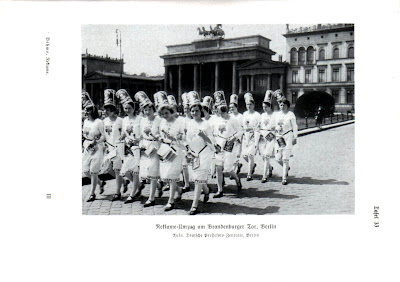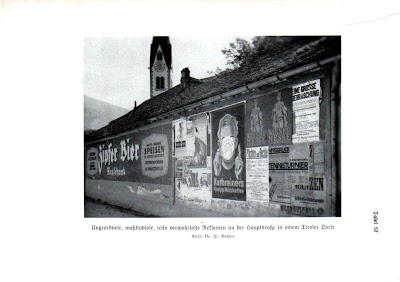


This book, published in 1931, is the German version of The Face of the Land, published in England in 1930 with an introduction by Clough Williams-Ellis. The Visual Telling of Stories displays generous extracts of the latter from the chapters on “The Petrol Station” and “The Roadside”. Both books are a polemic aimed at curbing the intrusion of advertising in the landscape in town and country alike. The text and most of the photographs in the book are the work of Theda Behme (1877-1961). Concern about the growing power of outdoor advertising crossed national boundaries and these books illustrate some gross and excessive examples. Those of us who are fascinated by outdoor advertising must face the dilemma that whilst some of the cruder and rudimentary examples are undoubtedly disfiguring the landscape there are many other examples which have a sense of vigour and vitality about them that is hard to resist. We also must be aware that with the passage of time, a cloud of nostalgia can settle over vintage publicity material and diminish the power to offend. The same eyes may not look so kindly on contemporary manifestations.



The idea that somewhere in the not too distant past there existed a rural arcadia, pure and uncontaminated by the modern world is very persistent and every successive generation falls victim to it. Some of that thinking can be detected in “The Face of the Land”. It is certainly true that there have been some infamous instances where the scale and insensitivity of outdoor advertising has been monumentally offensive but there is a body of opinion which resents the intrusion of even the most modest commercial imagery for both aesthetic and ideological reasons. There is a counter-argument that whilst conceding that countryside views with landscape value are never going to be enhanced by advertising display, in the undistinguished urban fringe or the cluttered commercial district, advertising imagery simply becomes part and parcel of the scene.



Theda Behme’s photographs reflect a world of muscular commercial activity in which entire gable ends are covered in vast images and letterforms designed to command the attention of a mobile urban population. The overall effect has an American flavour about it in terms of scale and profusion. An impression of a culture of energetic branding and marketing is created. There were many outstanding poster artists at work in Germany at this time, including Ludwig Hohlwein, Lucian Bernhard, Julius Klinger, Jupp Wiertz and Joseph Binder and the Germanic tradition was noted for its boldness and innovation. The urban landscape seen in these photos is the one that inspired painters of Die Neue Sacklichkeit, most notably Karl Hubbuch and Carl Grossberg. Both artists were especially fascinated by the visual impact of commercial imagery on the street scene and faithfully recorded it in their work.




No comments:
Post a Comment